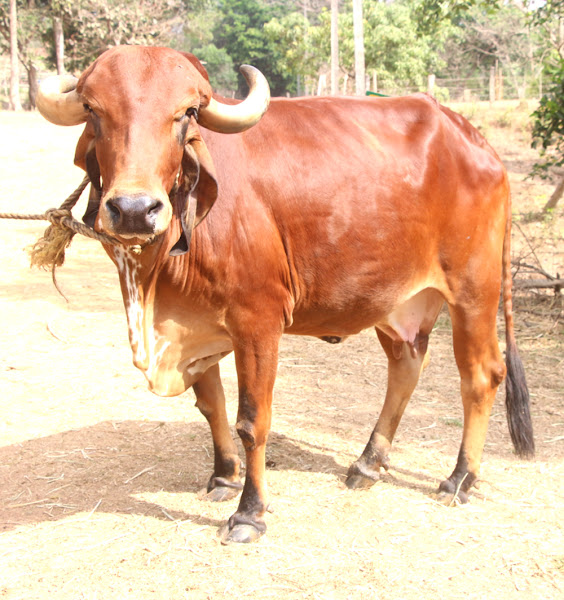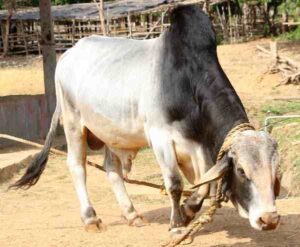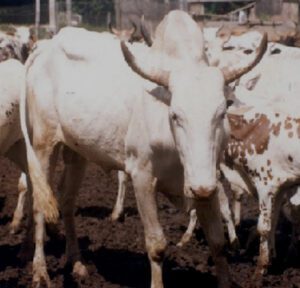Do you know how to tell if a cow or heifer is pregnant? Actually, determining pregnancy in cattle is very important and it has many benefits. And determining pregnancy in cattle is highly recommended for the cattle farmer for maximizing cattle breeding efficiency. Pregnancy diagnosis by rectal palpation has been performed for decades in cattle.
But this system involves an experienced person introducing his hand and arm into the rectum of the heifer or cow and feeling the fetus physically. A skillful palpator can diagnose pregnancy as early as around 40 days of gestation and later. Due to the variation in size of individual fetuses can make it pretty difficult as the fetus gets larger (but it is usually possible to determine the gestation length).
Determining Pregnancy in Cattle
Generally a cow or heifer is assumed to be pregnant if it’s estrus signs are not observed around 3 weeks after artificial insemination or service through a bull. Although not all the cows or heifers will be pregnant even if estrus detection is good.
On the other hand, during pregnancy some pregnant cows or heifers (around 7 percent) can show some signs of estrus. Artificial insemination of these animals may result in embryonic or foetal death. However, currently the most reliable methods of determining pregnancy in cattle are ; hormone measurements, rectal palpation, early pregnancy-associated protein and ultrasound examination. Here we are describing more about the easiest ways of determining pregnancy in cattle.
Rectal Palpation
Rectal palpation is the most easiest and old method for determining pregnancy in cattle. The main advantages of this method is immediate result which ensures early treatment of non-pregnant cows or heifers. Although accuracy in this method depends on the experience of the practitioner and the accuracy rate can reach around 95 percent. Rectal palpation method is generally done between 35 and 65 days after artificial insemination. You can call an expert in your area for determining pregnancy in cattle through this method.

Early Pregnancy-associated Protein
The most recent available test for determining pregnancy in cattle is called ECF (early conception factor), or pregnancy-associated glycoprotein in blood samples. This also an easy way, and the method can detect the pregnancy-associated glycoprotein within 2 days (or 48 hours) of conception. By the way, this test should be treated solely as an conception indication because of the high incidence of embryonic mortality. And pregnancy can be confirmed later by rectal or ultrasound examination.
Ultrasound Examination
This is also a very effective way for determining pregnancy in cattle. Real time ultrasound is a relatively simple and reliable system for determining pregnancy in cattle as early as day 26. And generally accuracy in this method is very high (sometimes with over 99 percent).
Behavioral & Physical Changes
You can also detect pregnancy of your cows or heifers by yourself. You can observe the behavior of you cows and heifers, and it is one of the best non-invasive means of determining pregnancy in cattle. On an average, the estrous cycle in cattle occurs every 21 days. If a heifer or cow has absorbed or aborted the embryo, she will soon come into estrus and continue regular cycling until she conceives again.
The bulls generally don’t show interest to any cows that maintain pregnancy. They generally show interest if a cow or heifer that comes into heat. So, observing the behavior of your bulls (if there are any) is also a great way for determining pregnancy in cattle.
Paying attention to the physical changes of your heifers and cows is also a way for determining pregnancy in cattle. Common physical changes in a pregnant cow or heifer includes changes to size, changes to body shape, and abdomen and udder changes. The udder begins to fill out more and reach maturity in heifers (virgin heifers that are not yet conceived will have and under-developed udder that is only resembled by the presence of four small teats tucked up under their belly between their hind legs).
These are the common ways of determining pregnancy in cattle. If you are a beginner, then please contact an experienced person for learning more. Best of luck!






